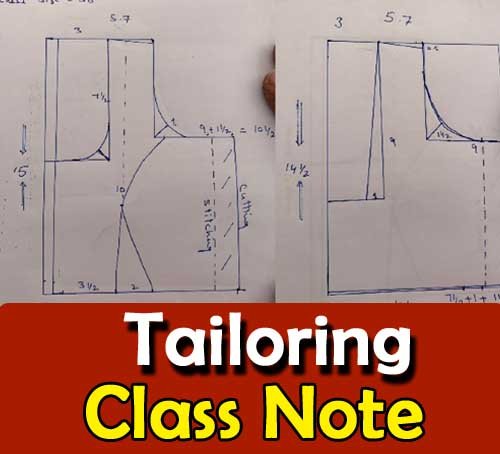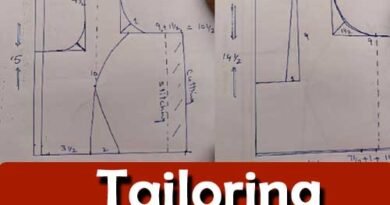Parts of a Basic Sewing Machine and Their Functions
Parts of a Basic Sewing Machine and Their Functions
It is important for the beginner to know and recognize the different parts of the sewing machine. The basic structure of a hand operated or electric sewing machine are the same.
\Parts of Sewing Machine:
1. Spool pin: While the thread feeds through the machine, the spool pin keeps the spool in place. Some machines have both horizontal and vertical spool pins.
2. Thread guide: It holds the thread in position from the spool to the needle.
3. Tension disc: The thread passes between the two concave discs put together with the convex sides facing each other. There is a spring and nut which increases or decreases pressure thus adjusting the tension of the thread
4. Take up lever: It is a lever fitted to the body of the arm. It’s up and down motion feeds the thread to the needle and tightens the loop formed by the shuttle.
5.Needle bar: Its main function is to give motion to the needle. The steel rod holds the needle at one end.
6. Bobbin case: This moves into position to catch the top thread and form the stitch as the needle is lowered into the bobbin chamber.
7. Presser foot: It is fixed to the presser bar and holds the cloth firmly in position when lowered.
8. Presser foot lifter: It is a lever attached to the presser bar for raising and lowering the presser foot.
9. Stitch regulator: This controls the length of the stitch.
10. Bobbin winder: A simple mechanism used for winding thread on the bobbin. 11. Fly Wheel: When this is made to revolve, it works the mechanism of the motion
12. Clutch or Thumb Screw: This is in the centre of the fly wheel and it engages and disengages the stitching mechanism.
13. Slide Plate: A rectangular plate, which facilitates the removal of the bobbin case without lifting the machine.
14. Needle Plate or Throat Plate: A semi-circular disc with a hole to allow the needle to pass through it.
15. Feed dog: This consists of a set of teeth fitted below the needle plate. It helps to move the cloth forward while sewing.
16. Face plate: A cover which on removal gives access to the oiling points on the needle bar, presser bar and
take-up lever.
17. Spool pin for bobbin winding: Spool of thread is placed on this at the time of bobbin winding. Few more parts of the sewing machine are as follows:
1. Arm: The horizontal upper part of the head which has the mechanism for handling upper thread and driving the needle.
2. Back Stitch Lever: A lever located at the lower right hand side of the machine and its basic function is to form the stitches in reverse direction.
3. Bed: The lower portion of the machine i.e. stands under which the mechanism for handling lower thread including the shuttle and feed are mounted.
4. Bobbin: A small metal spool that holds the lower thread supply.
5. Hand Wheel: Handel is located on the right side of the machine. It is driven by hand or belt in the domestic machine and with the help of belt in the industrial machine. It controls the movement of the needle bar and drives the machine.
6. Hand Lifter: To lift the presser foot by hand.
7. Head: The upper part of the machine above the stand. It is a complete sewing machine without the bed.
8. Pan: It is the metal pan under the head that catches oil, lint, broken threads
9. Shuttle: A device that carries the needle thread around the bobbin and forms the lock on the lock stitch
10. Tension Regulator: It is a mechanism which controls the tension of upper thread and the quality of stitches.The tension of the thread is adjusted with the help of spring and nut which controls the pressure on the disc
11. Thread Stand or Spool Pin: It is a metal rod fitted either on top or on side of the stand to hold the thread spool.
12. Thread Take Up Lever: A bar/lever which is located above the tension regulator. It moves up and down. It has a hole through which the thread passes. It feeds thread to the needle and it also tightens loop formed and locks it.


